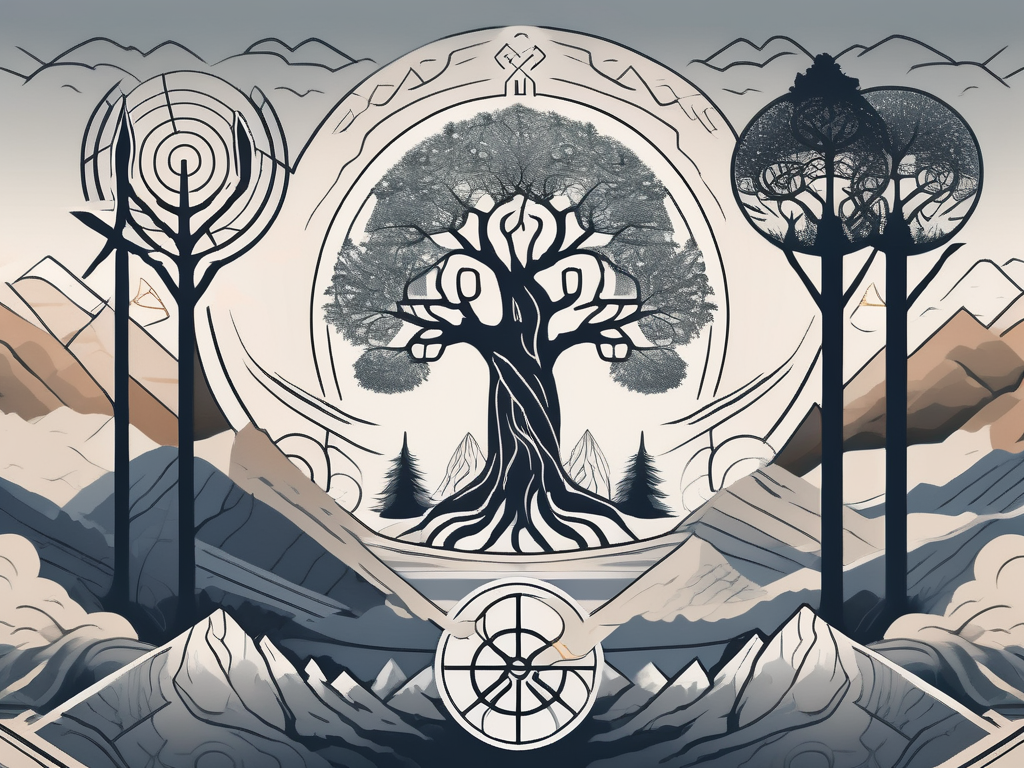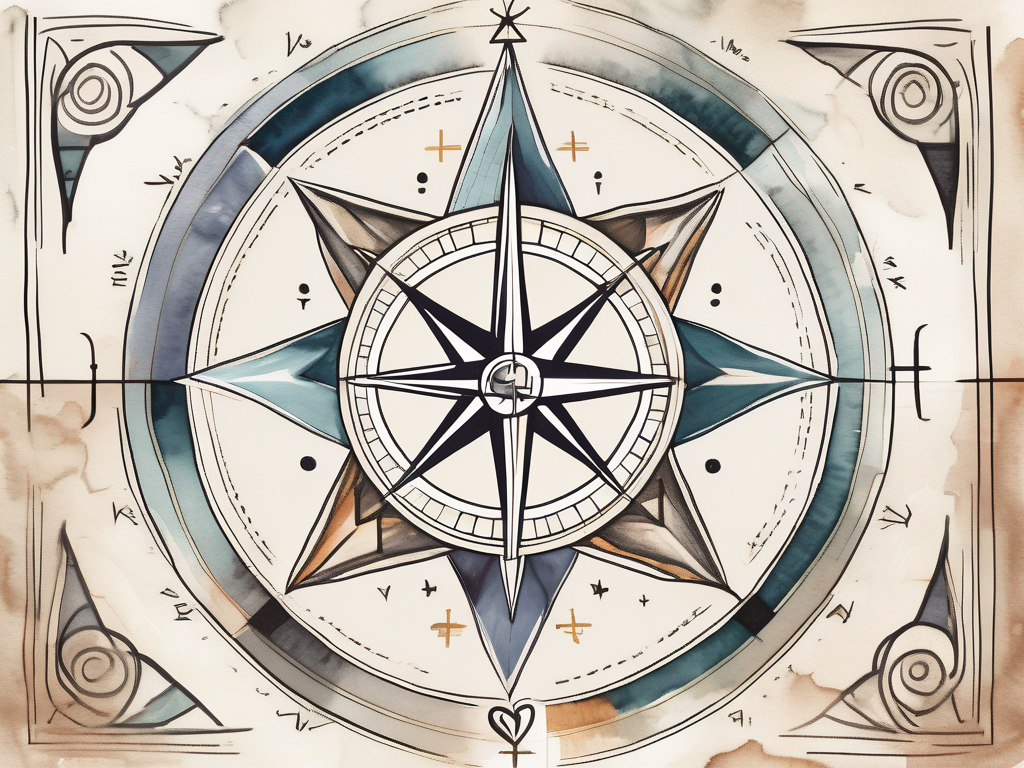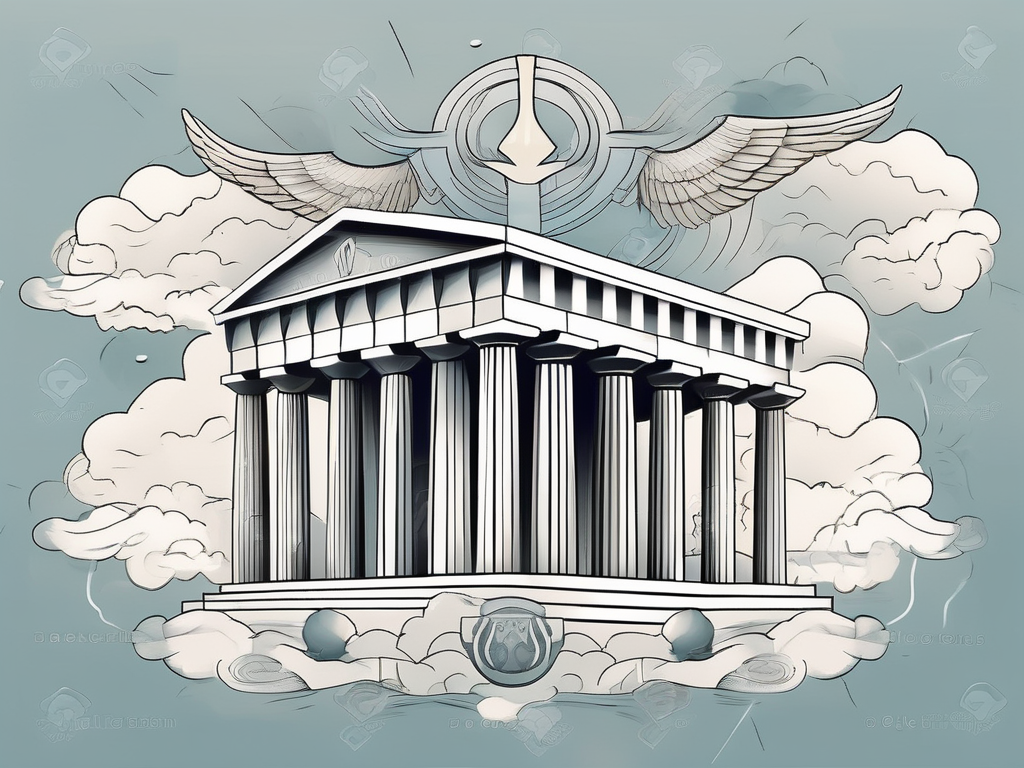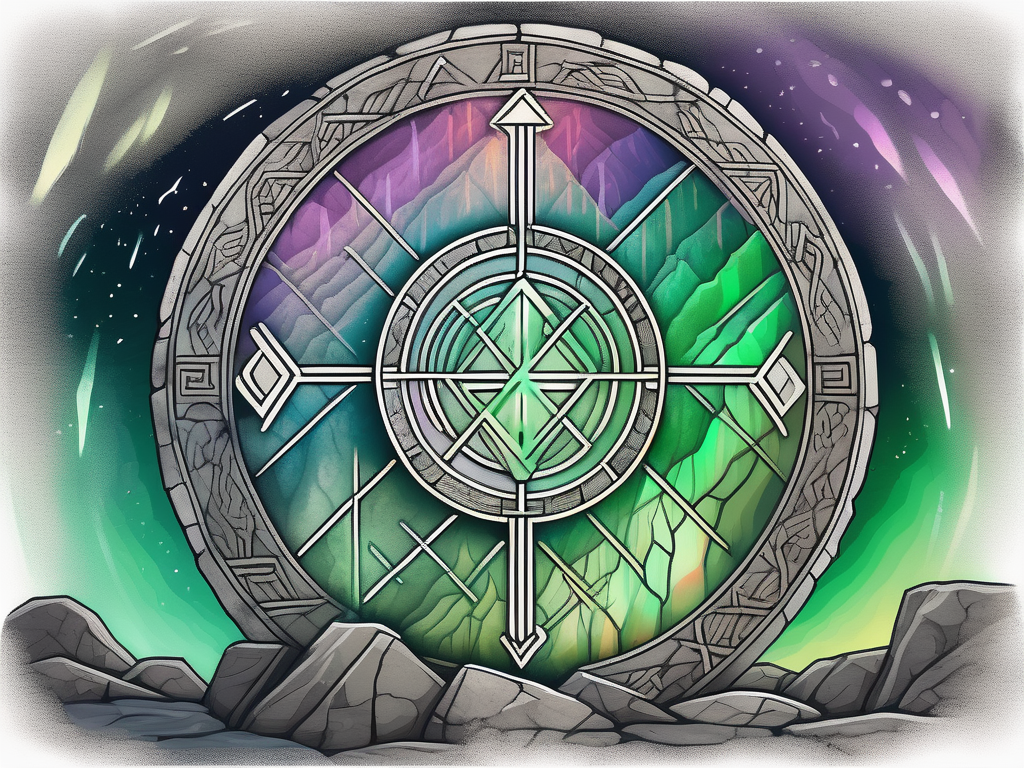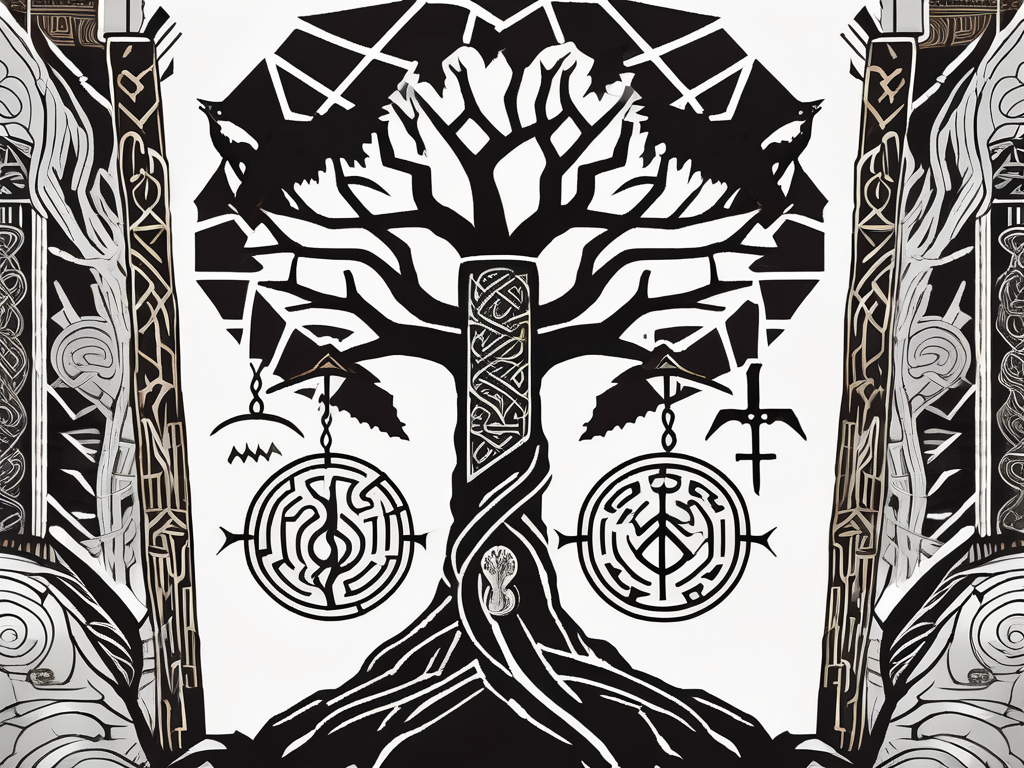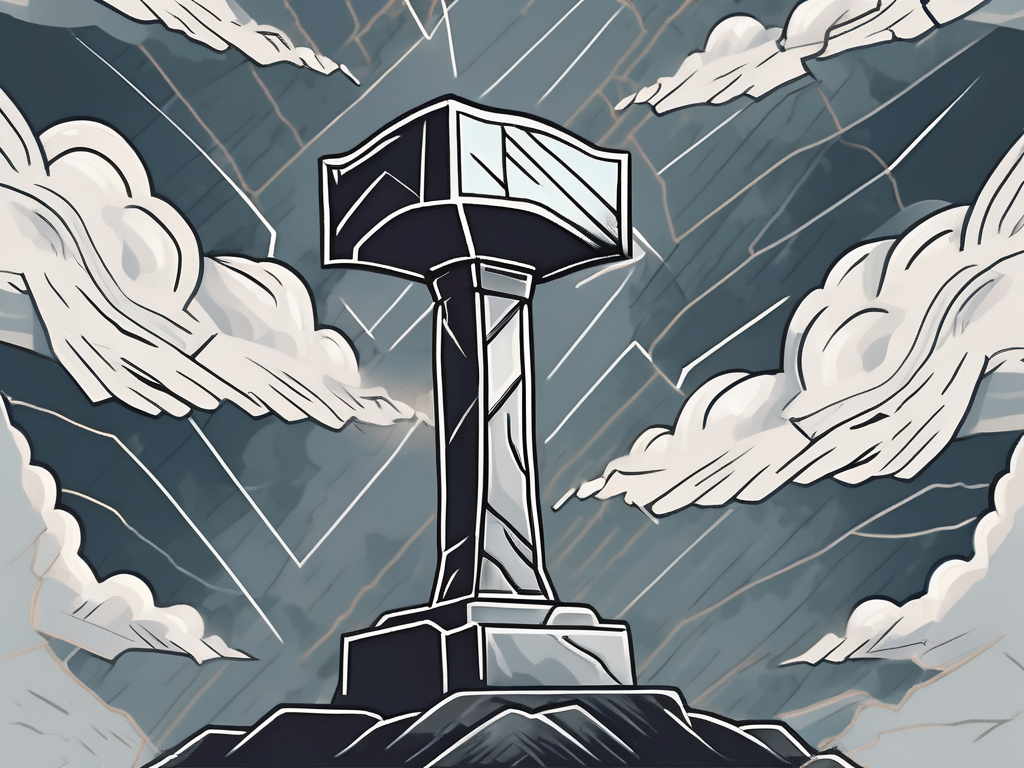Symbols have always played a significant role in human culture, helping to convey deep meanings and foster a sense of identity and connection. Norse mythology is no exception, as it is adorned with a rich tapestry of sacred symbols that unveil the hidden wisdom of the gods. In this article, we will delve into the importance of symbolism in Norse mythology, decipher ancient Norse symbols, explore the associations between major Norse gods and their symbols, uncover the lesser-known gods and their symbols, examine the influence of Norse symbols in modern culture, and shed light on the controversy surrounding their appropriation and reclamation.
Understanding the Importance of Symbolism in Norse Mythology
To truly grasp the depth of Norse mythology, one must recognize the vital role played by symbolism. Symbols act as gateways, allowing mortals to explore the divine realm and gain insights into the mysteries of existence. These symbols serve as conduits, connecting the human and divine realms and creating a shared language between gods and mortals. By understanding the meanings behind these symbols, we can unravel the layers of Norse mythology and gain a deeper appreciation for its profound wisdom.
Norse mythology is a rich tapestry of gods, goddesses, heroes, and mythical creatures. It is a world filled with epic battles, cosmic forces, and intricate narratives. At the heart of this intricate web lies symbolism, which weaves together the various threads of the Norse pantheon.
The Role of Symbols in Norse Beliefs
In Norse beliefs, symbols were not merely decorative or ornamental. They were imbued with spiritual energy and carried immense significance. The symbols acted as representations of the gods’ powers, attributes, and realms. By utilizing these symbols, the gods communicated with their worshippers, imparting knowledge, guidance, and protection. In essence, symbols were the keys to unlocking the mystical wisdom hidden within Norse mythology.
One of the most prominent symbols in Norse mythology is Yggdrasil, the World Tree. This colossal ash tree connects the nine realms of the Norse cosmos, serving as a bridge between the mortal realm, Midgard, and the divine realms of Asgard and Jotunheim. Yggdrasil symbolizes the interconnectedness of all things, the cyclical nature of life and death, and the eternal wisdom that flows through the cosmos.
Interpreting Ancient Norse Symbols
Deciphering ancient Norse symbols requires a keen eye and an understanding of their contextual meanings. Many symbols were associated with multiple deities and had complex layers of symbolism. For example, the hammer Mjölnir, wielded by the mighty Thor, represented not only thunder and lightning but also strength, protection, and fertility. Similarly, the ravens Hugin and Munin, accompanying Odin, symbolized thought and memory, guiding the Allfather in his pursuit of knowledge and wisdom. By studying the context and mythology surrounding these symbols, we can unlock their hidden meanings.
Another symbol of great significance in Norse mythology is the Valknut, also known as the “knot of the slain.” This intricate interlocking pattern of three triangles is associated with Odin, the Allfather, and represents his power over life, death, and the afterlife. The Valknut is often found at ancient Norse burial sites, serving as a symbol of protection and guidance for the souls of the departed.
As we delve deeper into the world of Norse mythology, we discover an abundance of symbols that reveal profound insights into the ancient Norse worldview. The serpent Jormungandr, encircling the world, symbolizes the eternal cycle of creation and destruction. The wolves Skoll and Hati, chasing the sun and moon, represent the inevitable forces of darkness that threaten to devour the celestial bodies during Ragnarok, the cataclysmic end of the world.
By exploring the symbolism within Norse mythology, we embark on a journey of discovery and enlightenment. We gain a deeper understanding of the gods and goddesses, their powers, and their relationships. We uncover the hidden meanings behind ancient rituals and traditions, and we connect with the timeless wisdom that has shaped human culture for centuries.
The Major Norse Gods and their Associated Symbols
In Norse mythology, the pantheon of gods is rich with fascinating characters, each possessing their own unique symbols that represent their powers, attributes, and roles in the cosmic order. Let us delve deeper into the symbols associated with three of the most prominent gods in Norse mythology: Odin, Thor, and Loki.
Odin: The Allfather’s Symbols
Odin, the Allfather and ruler of the gods, is a complex deity with a multitude of symbols that encapsulate his diverse nature. One of the most recognizable symbols associated with Odin is his spear, Gungnir. This mighty weapon not only represents his authority and military prowess but also serves as a symbol of his unyielding determination to protect his realm and maintain order.
Another symbol closely associated with Odin is the pair of ravens, Hugin and Munin, who perch on his shoulders. These intelligent birds embody Odin’s insatiable thirst for knowledge and his omniscient nature. They serve as his eyes and ears, gathering information from all corners of the cosmos and relaying it back to him, allowing him to make wise and informed decisions.
Additionally, Odin’s throne, Hlidskjalf, is a symbol of his ability to transcend the physical realms and observe the cosmic tapestry of fate. From this vantage point, he can see beyond the limitations of mortal perception and gain insight into the intricate workings of the universe.
Thor: The Thunder God’s Symbols
Thor, the mighty god of thunder, wields symbols that reflect his immense strength and his role as a protector of both gods and humans. The most iconic of these symbols is his hammer, Mjölnir. This mighty weapon not only represents Thor’s unparalleled power over thunder and lightning but also serves as a symbol of his unwavering dedication to defending the realms against the forces of chaos and destruction.
In addition to Mjölnir, Thor is often depicted with his chariot, which is driven by his trusty goats, Tanngrisnir and Tanngnjóstr. This symbolizes his ability to traverse the realms and bring forth storms wherever he goes. The thunderous rumble of his chariot wheels echoes his presence, striking awe and fear into the hearts of all who witness it.
Together, these symbols showcase Thor’s indomitable spirit and his unwavering commitment to protecting all that is sacred. He stands as a beacon of strength and courage, ready to face any challenge that comes his way.
Loki: The Trickster’s Symbols
Loki, the mischievous trickster of Norse mythology, does not possess traditional symbols like the other gods. However, his transformative nature itself can be seen as a symbol of change. Loki’s ability to shapeshift and assume different forms represents the ever-changing and unpredictable nature of life.
Furthermore, Loki’s cunning mind serves as a symbol of intellect and trickery. His quick wit and clever schemes often lead to unexpected outcomes, challenging the established order and forcing others to adapt to new circumstances.
Although not a physical symbol, the chains that bound Loki during his punishment symbolize the consequences one must face when acting in defiance of the natural order. These chains serve as a reminder that even the most cunning and elusive beings cannot escape the repercussions of their actions.
In conclusion, the symbols associated with the major Norse gods offer a glimpse into their powers, attributes, and roles within the intricate tapestry of Norse mythology. From Odin’s spear and ravens to Thor’s hammer and chariot, and Loki’s transformative nature and chains, each symbol adds depth and meaning to these fascinating deities, making them truly unforgettable figures in the pantheon of gods.
Lesser-Known Norse Gods and their Symbols
Freya: Symbols of Love and Beauty
Freya, the goddess of love, beauty, and fertility, was associated with several symbols that embodied her divine attributes. The necklace Brísingamen, a symbol of femininity and allure, adorned her neck and represented her power to captivate hearts. The chariot pulled by two majestic cats, Dankar and Dauði, symbolized her feminine power and independence. These symbols showcased Freya’s role in bringing fertility, love, and harmony to both gods and humans.
Heimdall: Guardian of the Gods’ Symbols
Heimdall, the watchman of the gods and guardian of Bifrost, possessed symbols that spoke of his duty and acute perception. The horn Gjallarhorn, symbolizing vigilance and the impending arrival of Ragnarök, was his most notable symbol. Additionally, his keen sense of hearing was represented by the symbol of the ear, reminding all of his ability to detect even the faintest threats. Heimdall’s symbols reflected his role as the ever-watchful protector of the gods and the realms.
The Connection Between Norse Symbols and Modern Culture
Norse Symbols in Popular Media
Norse symbols have found their way into various forms of popular media, captivating the imagination of many. From Thor’s hammer Mjölnir gracing the silver screen to Norse-inspired tattoos adorning the bodies of enthusiasts, these symbols have become iconic representations of strength, power, and the pursuit of knowledge. While their portrayal might not always be historically accurate, modern media has breathed new life into these ancient symbols, sparking interest in Norse mythology and its timeless wisdom.
The Influence of Norse Symbols on Modern Paganism
Modern Pagans, seeking spiritual connections with their ancestral roots, have embraced Norse symbols as sacred tools for worship and self-expression. Whether through wearing protective runes or crafting intricate Altars to honor the gods, modern Pagans draw upon the power and wisdom of Norse symbols to deepen their spirituality. These symbols serve as reminders of the gods’ presence, guiding practitioners on their spiritual paths and fostering a deep connection with the divine.
The Controversy Surrounding Norse Symbols
Misappropriation of Norse Symbols
Unfortunately, like many ancient symbols, Norse symbols have been misappropriated and co-opted for nefarious purposes. Extremist groups and hate organizations have adopted certain Norse symbols, tarnishing their sacred meanings with hate and bigotry. This misappropriation has led to misunderstanding and misrepresentation of Norse mythology and its symbols, causing harm and perpetuating harmful stereotypes. It is crucial to separate the genuine appreciation and study of Norse symbols from their misuse for divisive agendas.
Reclaiming Norse Symbols for Cultural Heritage
Despite the misappropriation, there has been a growing movement to reclaim Norse symbols and preserve their cultural heritage. Many individuals and groups, including scholars, artists, and practitioners of Norse faith, are actively working to educate others about the true meanings and significance of these symbols. By reclaiming these symbols, they aim to restore the Norse cultural legacy, honor their ancestors, and foster a greater understanding of the profound wisdom embedded within Norse mythology and its sacred symbols.
In conclusion, the symbols of Norse mythology offer a window into a world filled with gods, heroes, and timeless wisdom. They convey profound meanings, enabling mortals to connect with the divine realms and unlock hidden truths. Through an understanding of the importance of symbolism, the deciphering of ancient symbols, the exploration of major and lesser-known gods’ symbols, and an examination of their influence on modern culture, we can embrace the profound legacy of Norse symbols and seek to preserve their cultural heritage for generations to come.
